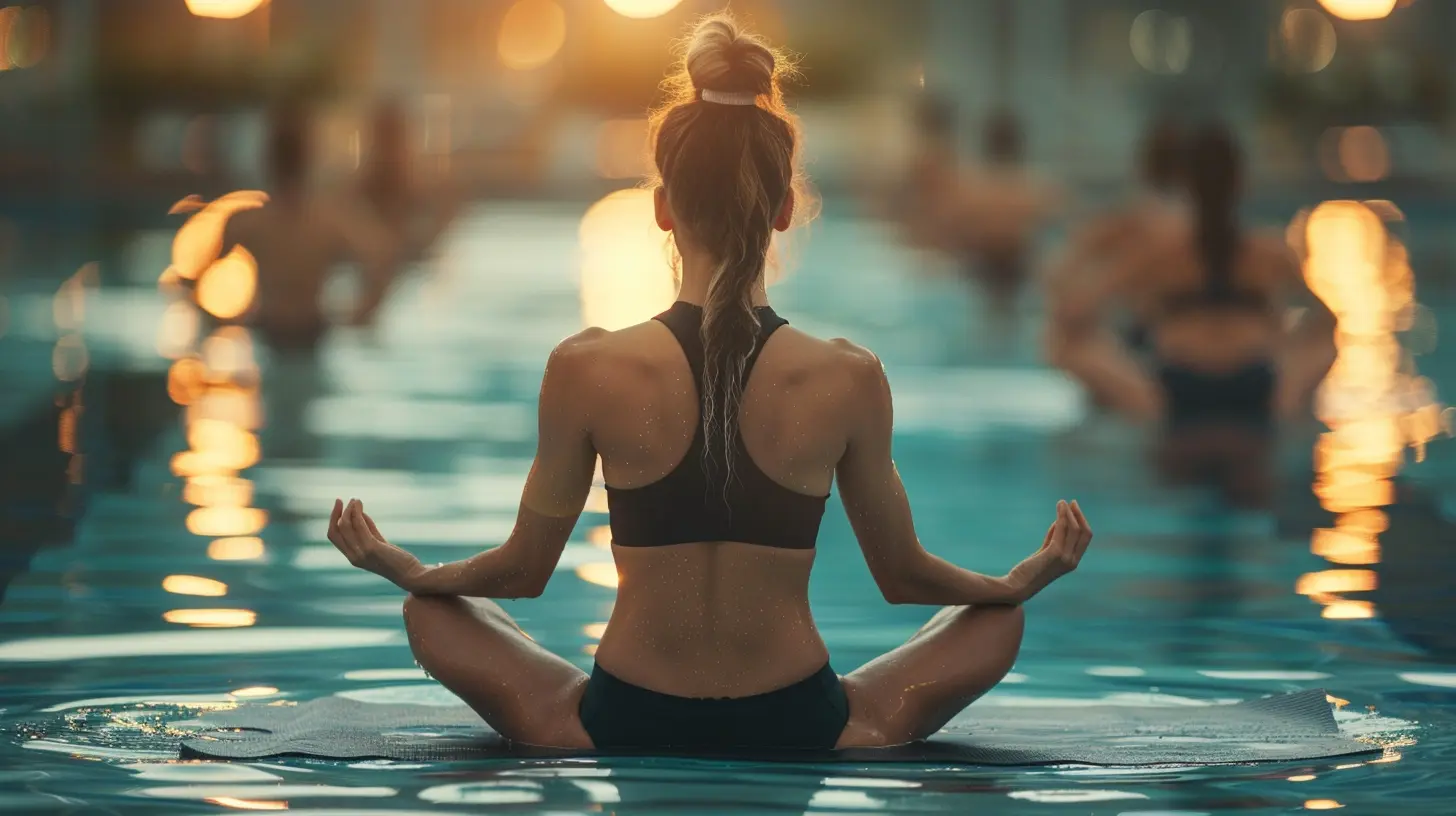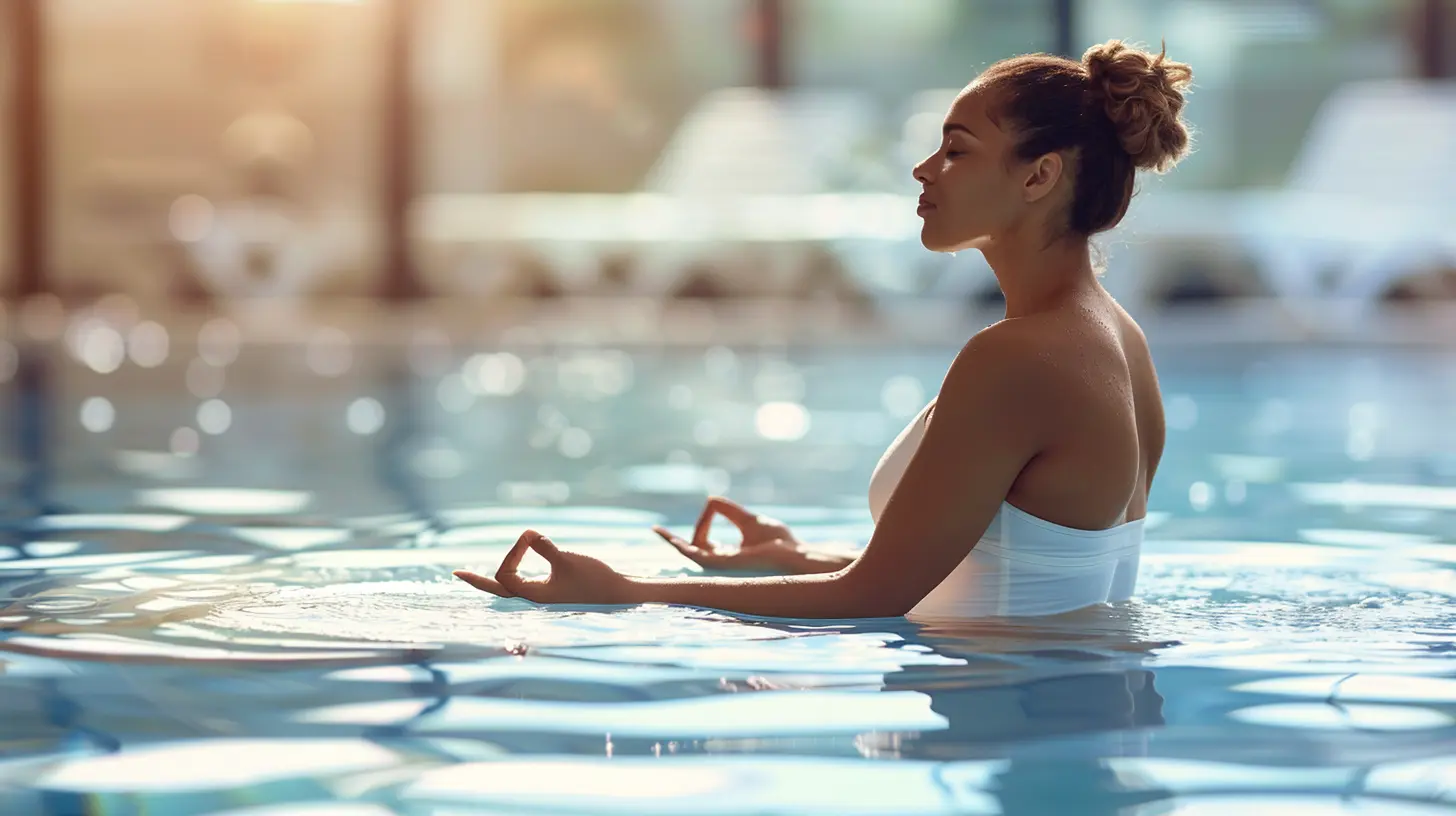The Benefits of Yoga for Swimmers
17 November 2025
If you're someone who lives for the water, you probably already know how important flexibility, strength, and stamina are in the pool. But what if I told you there’s a secret weapon that could seriously level up your swimming game? Yep, I’m talking about yoga. It’s not just for super-flexible yogis on Instagram—yoga has some surprising (and seriously awesome) benefits for swimmers of all levels.
Ready to stretch, breathe, and dive into how yoga can reshape the way you train? Let’s break it all down.
Why Swimmers Should Care About Yoga
Let’s be honest. As swimmers, we often pour all our focus into laps, drills, and dryland workouts. Yoga? It might not even be on your radar—yet. But here's the thing: the movements you do in the pool require a unique blend of strength, flexibility, coordination, and mental focus. And guess what supports all of those things? Boom—yoga.Think of Yoga as Cross-Training for the Soul (and Body)
You wouldn’t skip weight training or mobility exercises, right? Yoga is like giving your body a tune-up. It helps target the muscle groups you rely on in the water while also reducing risk of injury and sharpening your mental game.
Flexibility: Unlocking a Swimmer’s Greatest Asset
Swimmers need flexibility—no question about it. Whether it’s rotating through your shoulders, extending your dolphin kick, or streamlining your body off the wall, you’ve got to have range of motion.Yoga Helps Loosen Up Your Tightest Areas
Let’s talk specifics.- Shoulders: Yoga stretches like Downward Dog and Thread-the-Needle can open up your shoulder joints, reducing stiffness and improving reach.
- Hips: Poses like Pigeon and Lizard help loosen tight hip flexors, crucial for flutter kicks and starts.
- Ankles: Ever try pointing your toes like a ballerina under water? Yoga helps build ankle flexibility for smoother, more efficient kicks.
And here’s the kicker—greater flexibility also means less drag in the water. That translates to faster, smoother swimming. Who doesn’t want that?
Core Strength: Yoga Builds It Without Crunches
You’ve probably heard coaches say “power comes from the core.” And yep, they’re absolutely right.Yoga Strengthens Deep Core Muscles You Didn’t Know You Had
Unlike repetitive crunches or planks, yoga targets deep stabilizing muscles that help keep your body aligned while swimming. When you’re in the water, a strong core means staying straight and balanced—whether you're slicing through freestyle or holding a tight streamline in butterfly.Try poses like:
- Boat pose: Challenges your balance and lights up your midsection.
- Plank variations: Builds endurance and full-body tension.
- Bridge pose: Great for engaging glutes and lower back muscles—essential for a strong kick.
You’ll soon realize you can swim longer, hold better form, and recover faster between sets.
Injury Prevention: Yoga Is Prehab (and Rehab)
Let’s face it, swimming—like any sport—has its injury risks. Shoulder impingements, lower back pain, pulled hamstrings… sound familiar?Yoga Promotes Body Awareness and Balance
Yoga helps balance out the repetitive motion patterns of swimming. Swimmers often develop imbalances—strong lats but weak stabilizers, tight pecs but underused upper back muscles. Yoga encourages symmetry and alignment, reducing the wear and tear that leads to overuse injuries.Plus, it makes you a better listener to your body. That twinge in your shoulder? Yoga teaches you to notice it and address it before it becomes something worse.
Breathing: Take a Breath—Literally
Breathing in swimming is an art and a science. Control it poorly and you’re short on oxygen. Master it, and you can swim faster and longer with less fatigue.Enter Pranayama: Yoga’s Breathing Practice
Pranayama is the art of conscious breathing. Sounds fancy, but it’s super practical. It trains your lungs to fill more efficiently, helps you control your breath rate, and encourages relaxation even under pressure.Some techniques swimmers can try:
- Box breathing: Inhale-hold-exhale-hold—perfect for calming nerves during competition.
- Alternate nostril breathing: Balances your nervous system and promotes clarity.
- Ujjayi breath: A controlled, ocean-sounding breath that builds endurance and focus.
By practicing breath control on land, you’ll notice a difference the next time you push off the wall or nail that last 25 meters of an all-out sprint.
Mental Focus: Yoga Isn’t Just Physical
Everyone talks about the “mental game,” especially in high-pressure races or long-distance events. But actually training your mental muscles? That’s where yoga comes in.Yoga Builds Mindfulness and Inner Calm
Through meditation and mindful movement, yoga teaches you how to stay focused, present, and in control—even when your arms feel like jelly and your lungs are begging for air.You know that moment when you're on the last lap, and your mind screams, “I can’t”? With regular yoga practice, that mental breakdown becomes a “Yes, I can.”
Recovery: Your Body Will Thank You Later
Recovery is often the missing piece in many athletes’ training plans. We push hard but forget to rest smart.Yoga Encourages Gentle Movement and Active Recovery
Unlike an intense strength session or high-impact cardio, yoga allows your body to move and restore. Restorative poses help stimulate blood flow, ease tight muscles, and calm your nervous system.Swim hard, stretch longer. This simple equation leads to faster recovery, fewer injuries, and better long-term performance.
Best Yoga Poses for Swimmers
Alright, let’s get practical. Here’s a yoga toolkit for swimmers—simple poses that hit the sweet spot between strength, flexibility, and recovery.1. Downward Dog
Targets: Shoulders, hamstrings, calvesWhy It Helps: Elongates the spine and opens the shoulders—perfect post-practice stretch.
2. Cobra or Upward Dog
Targets: Chest, hip flexors, lower backWhy It Helps: Opens the front of the body, counteracting all that forward motion in swimming.
3. Pigeon Pose
Targets: Hips, glutesWhy It Helps: Deep release for hip tightness that builds from repetitive kicking.
4. Bridge Pose
Targets: Glutes, hamstrings, lower backWhy It Helps: Strengthens posterior chain, supports better lower body engagement.
5. Cat-Cow Stretch
Targets: Spine mobilityWhy It Helps: Improves spinal flexibility and natural movement between sets or on rest days.
How Often Should Swimmers Practice Yoga?
That depends on your goals. Want flexibility? Even 15 minutes, 3 times a week can make a difference. Looking to increase mindfulness and breath control? A daily short practice is gold.Here’s a sample breakdown:
- Flexibility-focused practice: 2–3 times per week (20-30 mins)
- Core strength and balance: 1–2 times per week
- Breathing and meditation: 5–10 mins daily
Consistency beats intensity. You don’t need to twist into a pretzel or spend an hour a day. Just a few mindful movements and breath exercises can transform how you feel in the water.
Final Thoughts: Yoga Isn't Just a Trend—It's a Game-Changer
So, is yoga going to replace your swim workouts? Not at all. But it complements them in ways that are hard to ignore. Better flexibility, improved breathing, reduced injury risk, and a calmer, more focused mind? That’s a serious win in and out of the water.Whether you’re a competitive swimmer, a triathlete, or just doing laps for fun, adding yoga to your routine might be the edge you didn’t know you needed.
So roll out the mat, take a deep breath, and stretch your way to a stronger swim. Your body—and your times—will thank you.
all images in this post were generated using AI tools
Category:
SwimmingAuthor:

Everett Davis

